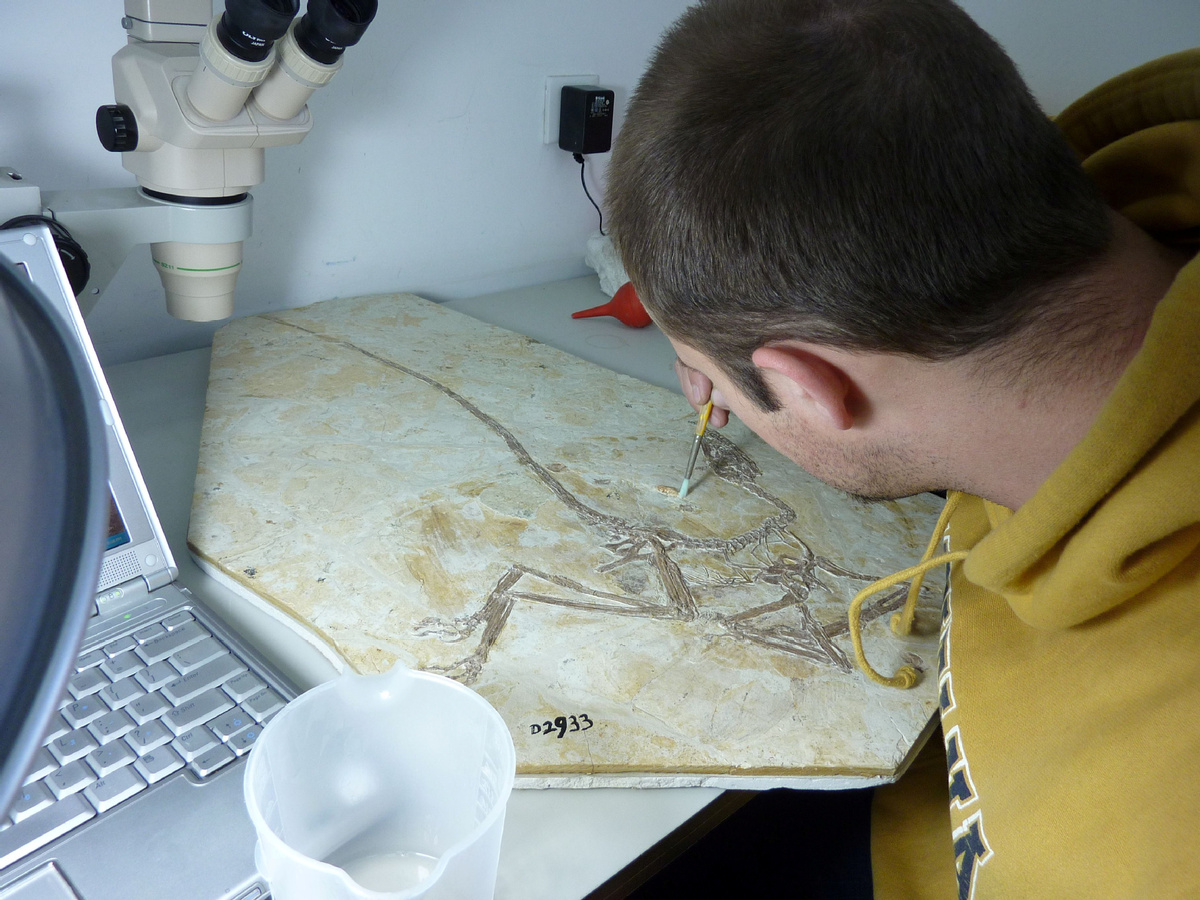New dinosaur species 'dancing dragon' identified in China


DALIAN - A dinosaur fossil found in northeastern China has been identified as a new species of tiny, winged and feathered dinosaurs by American and Chinese researchers.
The fossil, which was discovered more than a decade ago, has been housed in the Dalian Natural History Museum in northeastern Liaoning province.
Researchers from the San Diego Museum of Natural History in the United States, Dalian Natural History Museum, Montana State University and other research institutions reported the new dinosaur species in the US journal The Anatomical Record.
It was named Wulong bohaiensis, or "dancing dragon" in Chinese, for the pose of the preserved fossil.
From the early Cretaceous period, Wulong was bigger than a crow and smaller than a raven with its length doubled by a long, bony tail, said the researchers.
It has a narrow face filled with sharp teeth and was covered with feathers, including a wing-like array on both its arms and legs and two long plumes at the end of its tail.
Researchers said Wulong is one of the earliest known relatives of the Velociraptor which lived 75 million years ago. Its closest known relative would have been the small, four-winged Microraptor.
Jehol Biota, the site where the fossil was found, covers the northern part of Hebei province, western part of Liaoning province and southeast part of Inner Mongolia autonomous region and is known for the diversity of its plant and animal fossils.
Ashely Poust, the lead author of the research, said that the Jehol Biota is also one of the earliest bird-rich environments, where birds, bird-like dinosaurs and pterosaurs all shared the same habitat.
Wulong offers a glimpse into what Earth was like 120 million years ago, providing insights on how dinosaurs grew and how they differed from birds.
- Xi holds talks with Malaysia's king
- Macao's electoral authority confirms Sam Hou-fai as chief executive election candidate
- Xi Story: CPPCC, a great invention in political institutions
- Beijing Daxing airport flying high as it nears its fifth anniversary
- Man accused of killing Japanese boy arrested
- China to face 14th typhoon this year




































